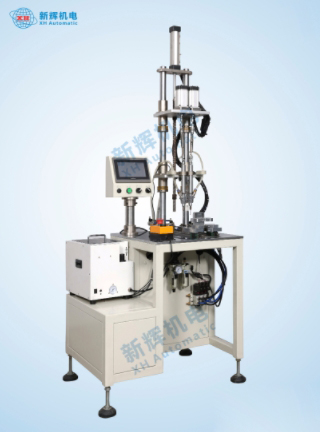How to fault analysis and troubleshooting of motor motor automatic screwing machine?
First, the basic steps of fault analysis and troubleshooting
1, observe the fault phenomenon
When the equipment fails, first of all, we should carefully observe the external manifestations of the failure. For example, is a complete stop working, or part of the function is abnormal, such as screws can not be supplied normally or tightening torque is not accurate. Observe whether the equipment has abnormal sound, odor or smoke.
Record the state of the equipment at the time of failure, including the operation being carried out (whether in the normal screwing process, or just turned on or ready to shut down), the condition of the workpiece (the size of the workpiece, whether the material meets the requirements) and other information. These details are very important for subsequent fault analysis.

2, to determine the scope of the fault
According to the observed fault phenomenon, the initial judgment of the possible scope of the fault. If the screw supply problems, then the failure may occur in the screw vibration plate, distributor or related components such as conveying pipeline; if the tightening torque is abnormal, the failure may involve the tightening motor, torque controller or the batch head (screwdriver head) and so on.
Use knowledge of the equipment's structure and operating principle to gradually narrow down the scope of the fault. For example, check whether the fault-related electrical connections are normal, whether the mechanical transmission components are loose or jammed and so on.
Second, common fault analysis and troubleshooting methods
1, screw supply failure
Screw vibration disk does not work
Cause analysis: it may be a power problem, such as loose plugs, blown fuses; it may also be the electromagnetic coil inside the vibration plate is damaged or controller failure.
Troubleshooting: First check whether the power plug is tight, whether the fuse is normal. If the power supply is normal, open the equipment shell and check the electromagnetic coil for signs of burning. For controller failure, you can try to reset the parameters or replace the controller.
2、Screw supply is not smooth or blocked
Reason analysis: the screw size does not meet the requirements, resulting in the vibration plate or the distributor stuck; the mechanical parts of the distributor is worn or clogged with foreign objects; the conveyor pipe is bent or there are impurities inside.
Elimination methods: check whether the screw size is consistent with the requirements of the equipment, clean up the foreign matter in the distributor and conveying pipeline, and replace the worn distributor parts, such as slider, guide rail, etc. in time.
3、Tightening torque failure
Torque is too large or too small
Reason analysis: the torque controller is set incorrectly; tightening motor failure, such as motor speed abnormality or unstable output torque; batch head wear is serious, resulting in contact with the screw area and friction change.
Troubleshooting method: Firstly, check whether the setting parameter of torque controller is correct, and recalibrate the torque. If the parameters are correct, check the operation of the tightening motor, including whether the power supply voltage and current of the motor are normal, and whether the shaft of the motor can rotate freely. For the batch head wear problem, timely replacement of the batch head.
4、Can not reach the set torque
Cause analysis: motor power is insufficient, may be the motor itself aging or power supply is insufficient; torque sensor failure, resulting in inaccurate feedback torque information; mechanical transmission part of the existence of a large resistance, such as synchronous belt is too tight or linear guide friction is too large.
Remedy: Check the power supply of the motor and test whether the power of the motor meets the requirements. For torque sensor failure, use professional tools for testing and replacement. Adjust the mechanical transmission part of the tightness, reduce unnecessary resistance.
5、Mechanical transmission failure
Loose or broken synchronous belt
Reason analysis: long time use leads to synchronous belt wear; synchronous belt tensioning device failure; equipment is subject to excessive external impact.
Remedy: replace the worn or broken synchronous belt, check whether the tensioning device is normal, readjust the synchronous belt tension. If the equipment is impacted by external forces, you also need to check whether other related components are damaged.
6, linear guide movement is not smooth
Reason analysis: slider wear; rail surface impurities or scratches; insufficient lubrication.
Elimination methods: replace the worn slider, clean up the impurities on the surface of the guide rail, use the appropriate lubricant to lubricate the guide rail. For the case of serious scratches on the surface of the guide rail, it may be necessary to replace the guide rail.
Electrical control system failure
7, the equipment can not start
Cause analysis: power supply failure, such as power line damage, switch damage; electrical control cabinet relays, contactors and other components failure; PLC (programmable logic controller) program error or module failure.
Troubleshooting methods: Check whether the power line and switch are normal, use a multimeter and other tools to check the relay and contactor on and off. For PLC failure, need professional personnel through the programming software to check and debug to see if the program is wrong or module is damaged.
8、Sensor failure
Cause analysis: the sensor is contaminated by dust, oil, etc.; the sensor itself is damaged, such as photoelectric sensor light-emitting diode or photosensitive element failure.
Remedy: Clean the sensor surface, check whether the sensor connection line is loose. If the sensor still does not work properly after cleaning and checking the connecting wires, use the replacement method and replace the sensor with a new one to determine if the sensor itself is damaged.
※ If you still can't solve the problem by the above ways and means, please contact the technical specialist of Xinhui Mechanical & Electrical Equipment Co.







